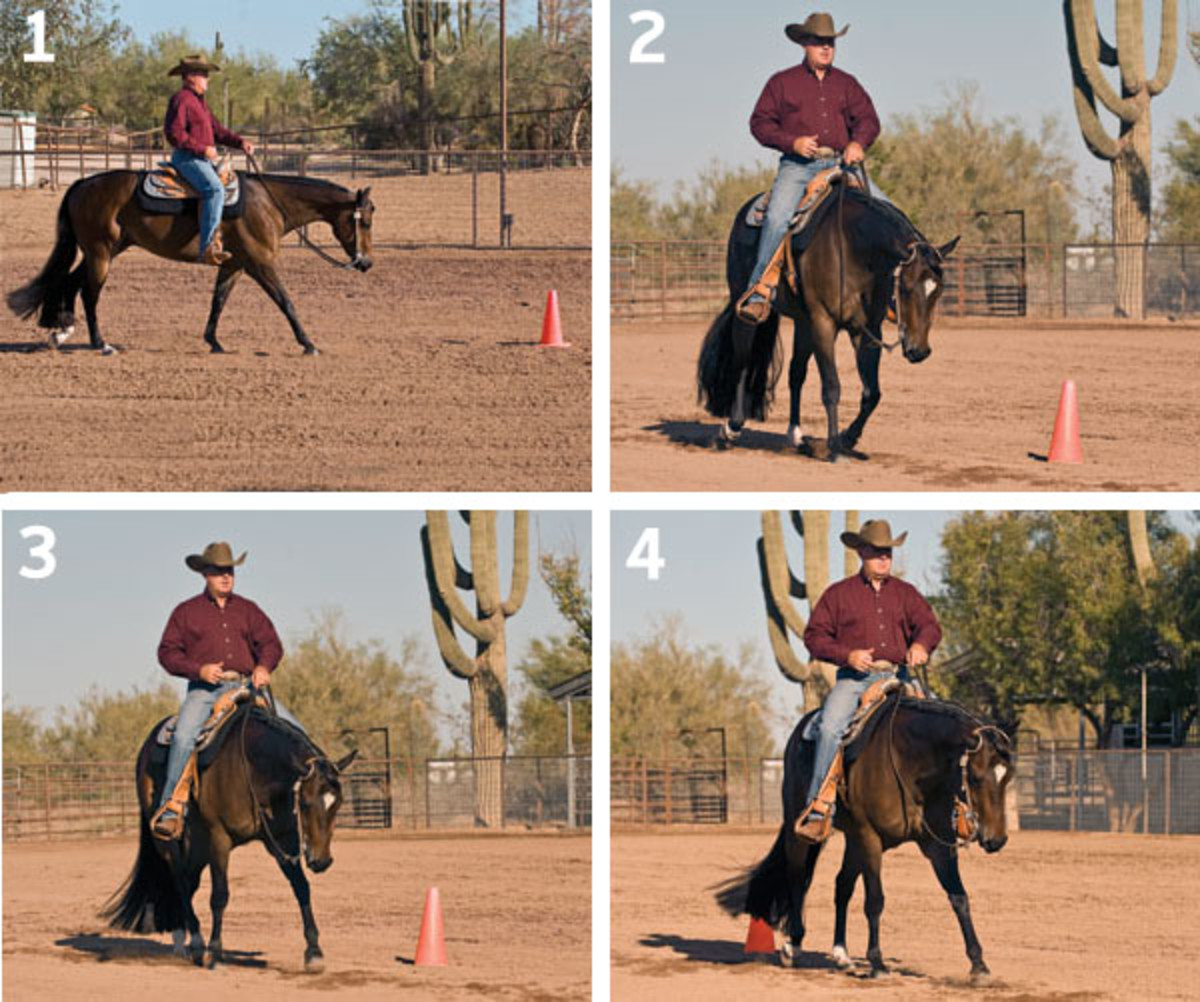Lesson Objective
If you compete: Achieve perfect timing when a simple lead change is called for in a horsemanship pattern, and polish your simple change with helpful dos and don’ts.
If you don’t: Challenge yourself and your horse to work together for smooth simple changes (lope on one lead, break to the jog for a couple steps, and then pick up the opposite lead) and elevate your skill level.
The expert: Jim Searles, Scottsdale, Arizona; AQHA and NSBA judge and world champion trainer and amateur/youth coach.
If you compete in horsemanship, you’ve probably seen patterns that specifically call for a simple lead change (for novice amateur or youth classes) or those that give you a choice of doing a flying lead change or a simple one. In a case when it’s your choice, you’d opt for the simple change if it’s more polished and precise than your flying change.
If you’re not a horsemanship competitor, simple lead changes are great for fine-tuning your horse’s handle, as well as setting the foundation for flying changes.
Here I’ll offer a step-by-step tutorial for timing your simple lead change, whether it’s at a cone in the arena or at a spot left to your judgment. I’ll also discuss dos and don’ts to ensure that you have the best simple lead change in the bunch.
1. I approach the marker on the right lead. My horse is loping in a relaxed manner, but is focused on me and what I’ll ask for next. He won’t anticipate the change, because we haven’t over-practiced our lead change.

2. Just before my horse’s head reaches the marker, I ask him to break to a jog with a voice command and pay close attention to ensure that he doesn’t break to a walk or completely stop. He can jog three to four steps without penalty.
3. When my horse’s head reaches the marker, I cue him for a left-lead departure, keeping my cues quiet and soft. There’s a “gray area” for the lead change from a horse’s length behind the marker to a horse’s length in front of the marker, as you approach it. It’s within this area that the change must occur.
4. I lope off on my left lead, ready to execute the pattern’s next maneuver.
Dos and Don’ts
DO ask your horse to jog more strides between lead changes at home than you ordinarily would at a show to prevent your horse from anticipating the change.
DON’T practice lead changes over and over again, especially in the same place or at a cone. This will lead to anticipation, which is an entirely separate problem.
DO adjust your reins appropriately, so that you have soft contact on your horse’s mouth and can easily ask for the break of gait, or any other maneuvers in the pattern.
DON’T let your horse do a flying lead change if a simple change is called for. Further, if a simple lead change is specifically called for, don’t practice flying changes before your pattern.
DO ask your horse to drop to a jog before you reach the marker or your chosen spot for a simple change.
DO lope off on the opposite lead within a horse’s length of the designated spot.
DON’T forget that your form matters throughout the pattern—no leaning forward or backward during the change.
JIM SEARLES. Named the 2007 AQHA Professional’s Choice Most Valuable Horseman, Jim trains open horses and coaches youth and amateur competitors with his wife, Deanna. They have two children, Taylor and Trent.






